
Which of the following compounds is optically active?
A. $\text{C}{{\text{H}}_{3}}\text{C}{{\text{H}}_{\text{2}}}\text{COOH}$
B. $\text{HOOC - C}{{\text{H}}_{\text{2}}}\text{- COOH}$
C. $\text{C}{{\text{H}}_{\text{3}}}\text{CH(OH)COOH}$
D. $\text{C}{{\text{l}}_{\text{2}}}\text{CHCOOH}$
Answer
492.3k+ views
Hint: A substance which has optical activity, is a substance which rotates the plane of plane polarized light. To know whether a compound is optical active we need to consider the property of chirality. By chirality we mean a carbon having 4 different groups attached to it. If we find any chiral centre, then that compound is optically active. With this approach, we can find out which of the compounds mentioned in the options are optically active.
Complete step by step answer:
Option A mentions the compound $\text{C}{{\text{H}}_{3}}\text{C}{{\text{H}}_{\text{2}}}\text{COOH}$ which has an IUPAC name of propanoic acid has a molecular structure of,
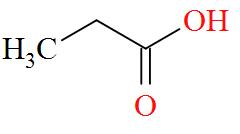
As per the definition, no carbon atom in propanoic acid is seen to be bonded to four different atoms or groups of atoms. Hence, propanoic acid is optically inactive in nature.
Option B mentions the compound $\text{HOOC - C}{{\text{H}}_{\text{2}}}\text{- COOH}$ also known as Malonic acid has a molecular structure of,
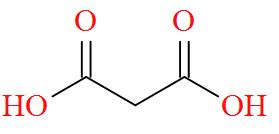
As per the definition, no carbon atom in Malonic acid is seen to be bonded to four different atoms or groups of atoms. Hence, Malonic acid is optically inactive in nature.
Option C mentions the compound $\text{C}{{\text{H}}_{\text{3}}}\text{CH(OH)COOH}$ which has an IUPAC name of 2-hydroxypropanoic acid, also known as lactic acid has a molecular structure of,
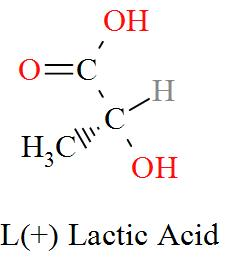
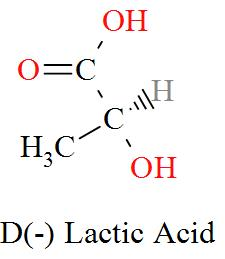
As per the definition, here we can see one carbon atom in Lactic acid is seen to be bonded to four different atoms or groups of atoms forming a Levo and a Dextro structure. Hence, Lactic acid is optically active in nature.
Option D mentions the compound $\text{C}{{\text{l}}_{\text{2}}}\text{CHCOOH}$ which has an IUPAC name of dichloroacetic acid has a molecular structure of,
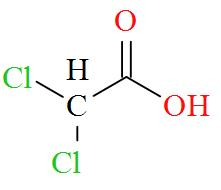
As per the definition, no carbon atom in dichloroacetic acid is seen to be bonded to four different atoms or groups of atoms. Hence, dichloroacetic acid is optically inactive in nature.
Therefore, the correct option is Option C.
Note: Therefore, we can say that chiral molecules are optically active, which implies that when a beam of plane polarized light passes through a chiral molecule. This will make sure that it interacts with the molecule in such a way that the angle of the plane of oscillation rotates.
Complete step by step answer:
Option A mentions the compound $\text{C}{{\text{H}}_{3}}\text{C}{{\text{H}}_{\text{2}}}\text{COOH}$ which has an IUPAC name of propanoic acid has a molecular structure of,

As per the definition, no carbon atom in propanoic acid is seen to be bonded to four different atoms or groups of atoms. Hence, propanoic acid is optically inactive in nature.
Option B mentions the compound $\text{HOOC - C}{{\text{H}}_{\text{2}}}\text{- COOH}$ also known as Malonic acid has a molecular structure of,

As per the definition, no carbon atom in Malonic acid is seen to be bonded to four different atoms or groups of atoms. Hence, Malonic acid is optically inactive in nature.
Option C mentions the compound $\text{C}{{\text{H}}_{\text{3}}}\text{CH(OH)COOH}$ which has an IUPAC name of 2-hydroxypropanoic acid, also known as lactic acid has a molecular structure of,


As per the definition, here we can see one carbon atom in Lactic acid is seen to be bonded to four different atoms or groups of atoms forming a Levo and a Dextro structure. Hence, Lactic acid is optically active in nature.
Option D mentions the compound $\text{C}{{\text{l}}_{\text{2}}}\text{CHCOOH}$ which has an IUPAC name of dichloroacetic acid has a molecular structure of,

As per the definition, no carbon atom in dichloroacetic acid is seen to be bonded to four different atoms or groups of atoms. Hence, dichloroacetic acid is optically inactive in nature.
Therefore, the correct option is Option C.
Note: Therefore, we can say that chiral molecules are optically active, which implies that when a beam of plane polarized light passes through a chiral molecule. This will make sure that it interacts with the molecule in such a way that the angle of the plane of oscillation rotates.
Recently Updated Pages
Master Class 9 General Knowledge: Engaging Questions & Answers for Success

Master Class 9 English: Engaging Questions & Answers for Success

Master Class 9 Science: Engaging Questions & Answers for Success

Master Class 9 Social Science: Engaging Questions & Answers for Success

Master Class 9 Maths: Engaging Questions & Answers for Success

Class 9 Question and Answer - Your Ultimate Solutions Guide

Trending doubts
According to Bernoullis equation the expression which class 11 physics CBSE

Draw a diagram of nephron and explain its structur class 11 biology CBSE

Differentiate between calcination and roasting class 11 chemistry CBSE

A solution of a substance X is used for white washing class 11 chemistry CBSE

What is spore formation class 11 biology CBSE

10 examples of friction in our daily life




